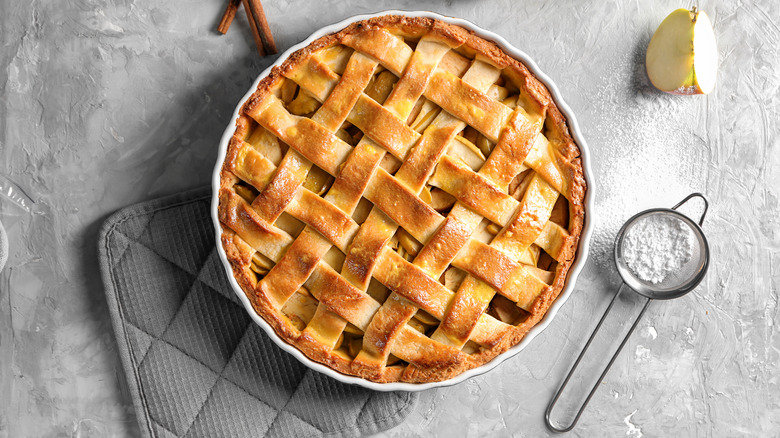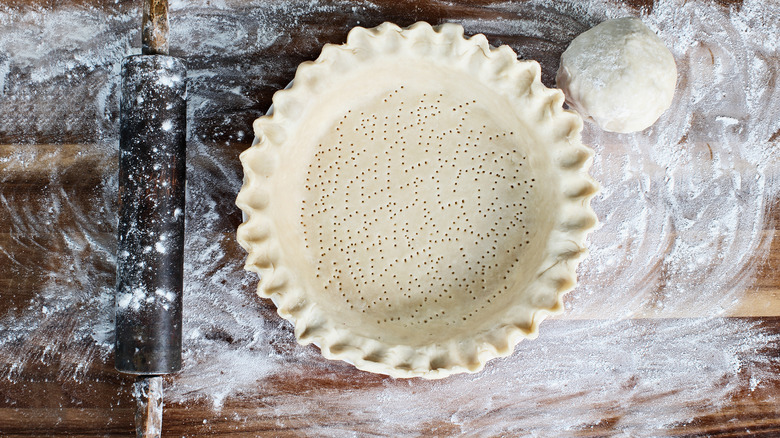This Simple Trick Can Prevent Burnt Pie Crust
Is there anything more delicious than pie? If you're team cake, we get it, but for us, there's just something irresistible about a homey apple pie, a latticed raspberry pie, a fluffy-topped lemon meringue pie — need we go on? That combination of fruity filling or creamy pudding or fluffy mousse atop a crispy crust is simply irresistible, and we can't get enough.
And speaking of crust? It's the secret to a killer pie, in our opinion. A good pie crust is flaky, buttery, and well browned, neither pale and doughy nor bitter and burnt. Unfortunately, it can be all too easy to burn a pie crust: loaded, as it is, with fat, a pie crust can go from "perfectly browned" to "fit for the garbage" in just a few minutes. Luckily, there's an easy-peasy way to ensure a perfect — and protected — pie crust every time you bake. Read on to find out what it is.
Your pie crust needs a shield
When you think of a shield, your mind might conjure images of Captain America or a medieval knight. But did you know that your pie crust can benefit from a shield, too?
According to Taste of Home, baking a pie crust is actually pretty tricky. The main part of the crust is loaded with filling, so it doesn't get direct exposure to the heat of the oven and takes a while to brown. In that time, though, the naked, exposed edges of your pie crust — the ring around the outside of the pie — are prone to burning.
Enter the pie crust shield. You may be familiar with the idea; maybe, in the past, you've hastily crimped a few strips of tin foil over your pie edges and hoped for the best. But a better approach, as explained by Taste of Home, is to take the time to cut an actual circle of foil. Placing the circle right over your pie crust edges, you then carefully fold it over the side of the pan to secure it. You can do this at the beginning of the baking process and later remove the foil to allow the crust to (gently) brown; or you can put your shield into action later, once your crust is the perfect golden color and you don't want it to go any farther.
So there you have it: a new tool to call upon the next time you bake a pie. We're sure your guests will appreciate a non-burned crust.

